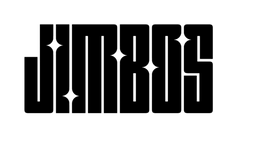Does Rinseless Washing Save Water? The Real Numbers
Rinseless washing has been marketed as an eco-friendly alternative to traditional car washing. The idea is simple: instead of using a hose and dozens of gallons of water, you clean your car with just a bucket of solution and microfiber towels. But here’s the question most people ask: does rinseless washing really save that much water?
The short answer is yes — and the numbers may surprise you. In this guide, we’ll break down the real water usage of rinseless washing versus traditional and touchless methods, so you can decide if it’s the right fit for you.
How Much Water Does a Traditional Wash Use?
A typical driveway wash with a hose can use anywhere from 40–100 gallons of water, depending on your technique. Foam cannons and pressure washers are more efficient, but they still use 15–25 gallons per wash on average.
Even when you’re careful, traditional washing wastes water because of constant runoff while rinsing panels, wheels, and pre-soaking.
How Much Water Does a Rinseless Wash Use?
Here’s where rinseless shines: a rinseless wash typically requires only 1–2 gallons of water total — just enough to fill a bucket with solution and soak your microfiber towels.
That means rinseless washing saves 90% or more water compared to hose-based methods.
Example breakdown:
- Traditional driveway wash: 60 gallons average
- Pressure washer wash: 20 gallons average
- Rinseless wash: 1.5 gallons
How Much Water Does a Waterless Wash Use?
A waterless wash technically uses 0 gallons of free water — just the product itself. But waterless washing is only safe for lightly dusty cars. On anything dirtier, rinseless is the safer choice because it uses more liquid lubrication.
So while waterless is “technically” the most eco-friendly, rinseless provides the best balance of low water use + safety.
Why Water Savings Matter
Even if you’re not in a drought area, water savings from rinseless washing make a big impact:
- Eco-friendly: Less runoff means fewer soaps and chemicals enter storm drains.
- Apartment-friendly: Perfect for places with no outdoor water access.
- Winter-friendly: Wash indoors without hoses or freezing water lines.
- Cost savings: Lower water bills and product waste over time.
Water Usage Comparison Chart
| Wash Method | Average Water Used | Eco Impact |
|---|---|---|
| Traditional Hose Wash | 40–100 gallons | High water waste, runoff |
| Pressure Washer | 15–25 gallons | More efficient, but still runoff |
| Rinseless Wash | 1–2 gallons | 90%+ water savings, minimal runoff |
| Waterless Wash | 0 gallons | Eco-friendly, but only safe on dust |
Does Rinseless Washing Still Clean Well?
Some skeptics assume rinseless means cutting corners on cleaning, but that’s not true. A good rinseless wash formula uses encapsulating polymers that surround dirt particles so they can be wiped away safely without scratching. Combined with clean microfiber towels, rinseless washing leaves cars just as clean as traditional methods — while saving massive amounts of water.
To boost results, many detailers add protection immediately after with a ceramic spray like Tough As Shell, which extends gloss and reduces how dirty the car gets in the first place.
Best Practices for Eco-Friendly Washing
- Use a dedicated rinseless wash solution: Don’t substitute with regular car soap.
- Soak plenty of towels: The multiple towel method keeps dirt from being dragged across paint.
- Pre-spray panels: Use a pump sprayer with rinseless solution for extra lubrication.
- Dry with care: A Massive Drying Towel ensures a streak-free finish.
- Top with protection: Ceramic sprays make future rinseless washes even easier and safer.
The Bottom Line
Yes — rinseless washing saves water, big time. Compared to a traditional driveway wash, you’re saving 40–100 gallons each time. Even against a pressure washer, you’re saving over 90%. That makes rinseless the perfect balance of eco-friendly, safe, and effective for most cars.
If you want to maximize both efficiency and protection, pair your rinseless wash with a ceramic topper like Tough As Shell for long-lasting gloss and hydrophobics.
Wash Smarter. Save Water.
Switch to rinseless washing and cut your water use by 90% or more. Protect your paint after each wash with Tough As Shell for lasting shine.
👉 Get Tough As Shell on Jimbo’s Detailing
or
👉 Shop Tough As Shell on Amazon
Related Posts
- How to Wash a Car in Hot Weather Without Water Spots
- Prevent Water Spots When Washing in the Sun
- Foam Cannon Without a Pressure Washer – Does It Work?



